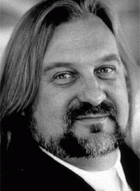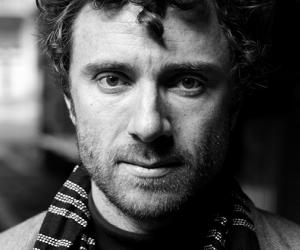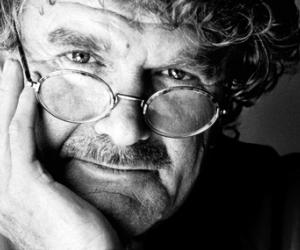First Published in
A summer party at London's Design Museum last year attracted the great and the good of British product design like few events before it. The occasion? The 20th anniversary of celebrated design group Seymour Powell whose founders, Richard Seymour and Dick Powell, have arguably done more than any of their UK peers to further the cause of good design.
Over the years the duo have employed great designers, many of whom have gone on to set up their own businesses after leaving the consultancy. They have brought design to the nation through a popular TV programme showing how everyday objects like the bra and the loo might be better designed to suit users' needs - and make create more commercial value for their manufacturers - and both have served on bodies such as the Design Council and as presidents of D&AD, the elevated design and advertising association bent on promoting creative excellence, education and enterprise through creativity.
Seymour Powell has designed a range of affordable products from kettles, notably for Tefal, Baby G and other watches for Cassio, garden tools, award-winning motorbikes, trains, domestic irons and even a range of vibrators for Durex owner, SSL International. The design is always good and often ground-breaking.
Yet, though both are ardent bikers, its principals are an unlikely pair. While Powell has made it through the conventional product design root, Seymour started out as a graphic designer, working in advertising then film production before taking up product design.
It is this diversity that sets Seymour apart in the UK, where specialisation is increasingly prevalent in design. He prides himself on being a designer first and a practitioner in whatever medium is appropriate second.
This came across loud and clear during his stunning presentation at Cape Town's 2005 Design Indaba, when in an emotionally charged performance this larger than life character addressed issues as universally important as the future of design and the plight of the homeless. In place of the more predictable trawl through his consultancy's past triumphs, he showed a short film taken by an eight-year-old irish boy, Timmy, when he first encountered homeless people on the streets of London.
Seymour hadn't planned to share these thoughts with the audience, but, he says, "I found myself being totally open at Indaba. It was amazing to see the 1500 people in the audience looking back and giving such a high quality of feedback. It was a very nourishing thing."
Seymour senses that product design is at a crossroads - a point that came across in his Indaba talk.
"It's clear to me that product design is changing cataclysmically," he says. It's going way beyond the discussion of "should we [as designers] be craft- or royalty-based" that has been a cornerstone of debate within the profession over the past 20 years.
He talks of the rise of ODM - original design and manufacture - which is shifting wholesale to the Far East, and China in particular. Manufacturing of Western goods is already being handled there big time and he expects design to be initiated there in the future. He advocates learning Mandarin as a key requisite for designers now if they want to make their mark in the world.
Now 51, Seymour is more likely than most to take this degree of change in his stride - though Mandarin isn't among his current accomplishments. Throughout a varied career, he's failed to see the boundaries between creative disciplines - except a vague resistence when he entered product design among his peers to accept someone not formally trained in the discipline as one of their own.
"It's more about what you have to say, not where you're saying it from," he says. "I believe design is design."
It's not surprising therefore that among the younger generation of designers he singles out fellow Indaba speaker Thomas Heatherwick, who trained as an architect and furniture designer, but whose work extends way beyond both, as an amazing man. Heatherwick is a prime example of a great designer who uses "imagination and delight in making exciting things", says Seymour.
Then there is Poke co-founder 34-year-old Simon Waterfall, a product designer, turned digital designer, turned quasi-adman who also took the stand at Indaba. Waterfall was one of Seymour's students - "a protegé" of whom he is "very proud".
Within product design, Seymour Powell has tended to be a pack leader. "When we started out, we modelled it on people we admired most, like Moggridge Associates [now part of Ideo] and Americo-German group, Frogdesign. Within two years we were pan-European and within four pan-global," says Seymour.
"We started as you might expect," he says, answering client briefs to design products. But the consultancy's role has broadened out considerably over the past ten year with SP Forecasting adding a research dimension to the work and the consultancy working "well upstream" in terms of personnel with companies such as Ford and Nokia to develop long-term strategies. Things have moved on apace, he says, and phrases like design research and design strategy "aren"t very helpful any more'.
But though product has been a major outlet for Seymour's creativity over the past 20 years, it's not the only thing. Apart from his "activist" tendencies within the UK industry - of which the SuperHumanism conference he staged under the auspices of D&AD some four years ago, and where he was "spotted" by Indaba founder Ravi Naidoo, is a case in point - he is working at "designing companies".
By this he means getting under the skin of clients and helping them to achieve greater things through better use of design. The British TV series "Designs on your…." in the late 1990s started the ball rolling here, with Seymour and Powell taking an equal part in the programmes. But now Seymour is working before rather more closed doors as an external advisor to Unilever.
He was appointed by Lever Fabergé four years ago to work, in his words, 'like a football coach" to help it to use design better. In February he added an additional external advisory role for Unilever's Dove toiletries brand to his CV.
He says that within organisations such as Unilever design is perceived as something you wrap around a product, while advertising is "the real thing". Significantly, though as a product designer he is used to dealing at board level with chief executives, technical directors and their ilk, at Unilever his first call is with relatively junior brand managers and the task he has set himself is to shift his audience up the pecking order.
Unilever is bent on change from being a category-managed organisation to being brand-managed and Seymour's appointments suggest that it sees design as key to that change. "But it's like climbing a mountain," he says. "It's a difficult ascent because the organisation's structure resists it."
Seymour is bent on cracking this one as a personal and important challenge, though he doesn't yet know if it's possible. The challenge for design at large though, he maintains, is in divergence, which he sees as the natural outcome of convergence of technologies.
He cites Apple Computer as a prime example of a company that is grasping the potential of divergence - and leading the field in so doing. The iPod Shuffle could not, he says, have come about until convergence had happened, he says.
Seymour talks of the present "bewildering times" as a period of massive change that few are prepared for. But "did people in the 16th century appreciate that they were going through the Renaissance?" he poses.
"The challenges coming up are enormous," he says, and if design doesn't grab hold of it, someone else will. "My anxiety is that no where near enough designers are approaching this with wisdom - and enthusiasm," he says, adding that a degree of pessimism appears to be creeping into the creative community.
His own philosophy is summed up as "optimistic futurism" - a tag he attatches to Apple - and he hopes more designers will follow this lead.
"Designers cannot afford to be pessimistic," he concludes. "It is part of the job to be optimistic."
















